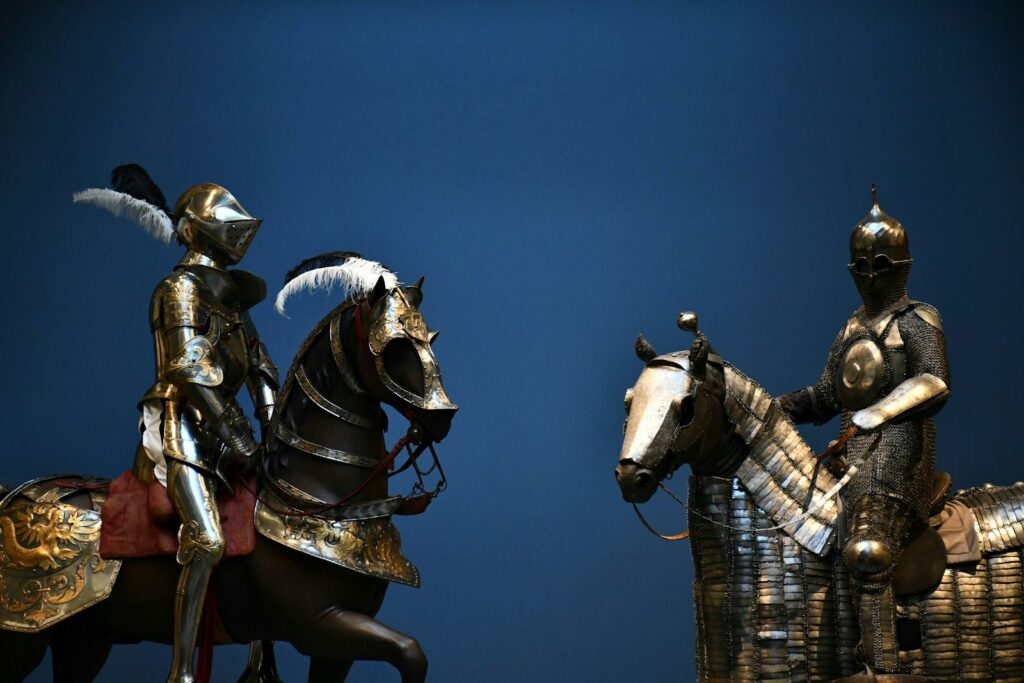The thundering hooves and majestic presence of horses gallop through the pages of medieval literature and epic poetry, serving as far more than mere transportation or background elements. In an age when horses were integral to warfare, nobility, and daily life, these magnificent animals became powerful literary symbols, character extensions, and even protagonists in their own right. From the legendary Bucephalus of Alexander the Great to the faithful steeds of knights errant, horses shaped medieval storytelling in profound ways, reflecting the intimate bond between humans and equines during an era when a person’s status, power, and very survival often depended on their equine companions. This exploration reveals how these noble animals inspired, enhanced, and defined some of the greatest works of medieval literature and epic poetry, creating a literary legacy that continues to resonate through the centuries.
The Symbolic Power of Horses in Medieval Society
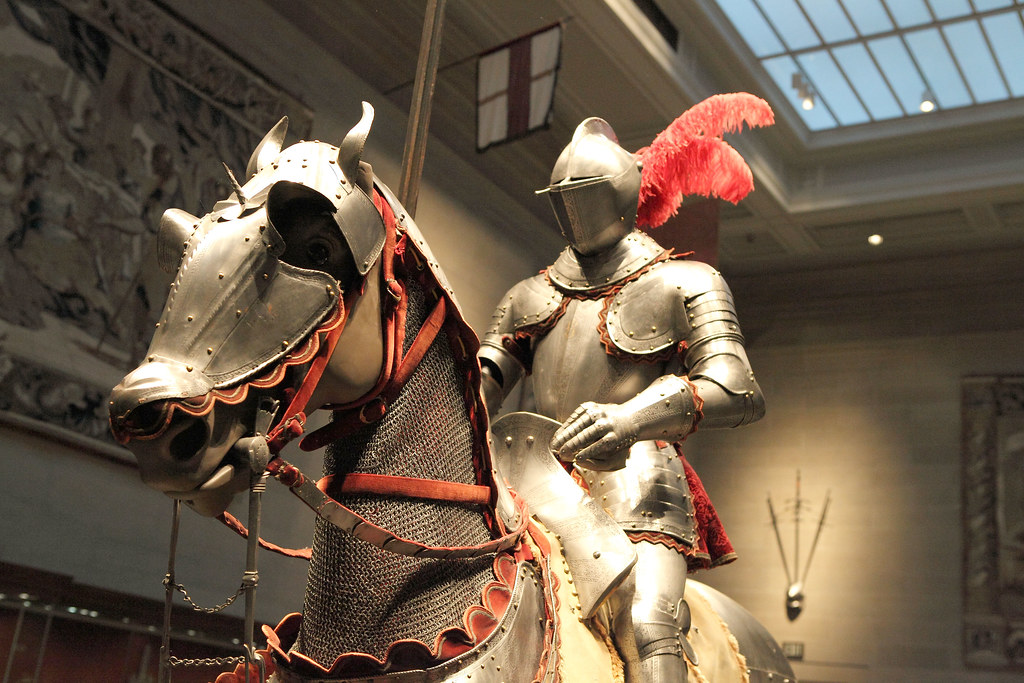
To understand the prominence of horses in medieval literature, we must first recognize their importance in medieval society where they represented wealth, power, mobility, and status. A knight without a horse was no knight at all, and the quality of one’s mount directly reflected one’s standing in the rigid social hierarchy of the time. Beyond practical considerations, horses embodied noble qualities that medieval society aspired to—strength tempered with obedience, power with loyalty, and freedom with service. These symbolic associations made horses natural vehicles for literary meaning, allowing authors to convey complex ideas about character, destiny, and social order through equine imagery and relationships. The deep emotional and economic investment in horses created a shared cultural understanding that medieval writers could draw upon to convey profound meaning with a simple reference to a character’s horse or riding style.
Chivalric Literature and the Knight’s Destrier

The warhorse or destrier features prominently in chivalric literature, where it often functions as an extension of the knight himself, sharing in his triumphs and reflecting his chivalric virtues. In works like “Sir Gawain and the Green Knight,” the protagonist’s horse Gringolet is named and described with almost human qualities, demonstrating how these animals were portrayed as noble companions rather than mere possessions. The relationship between knight and horse often parallels the knight’s own development, with the control of a powerful destrier symbolizing the knight’s mastery of his own strength and passions. Tales of knightly adventure typically include detailed descriptions of horses’ appearances, qualities, and actions, demonstrating how central these animals were to the chivalric imagination. The destrier’s courage in battle, loyalty to its rider, and noble bearing became metaphors for the ideal knight himself, creating a literary symbiosis between warrior and mount.
The Epic Horse Heroes of Chanson de Geste
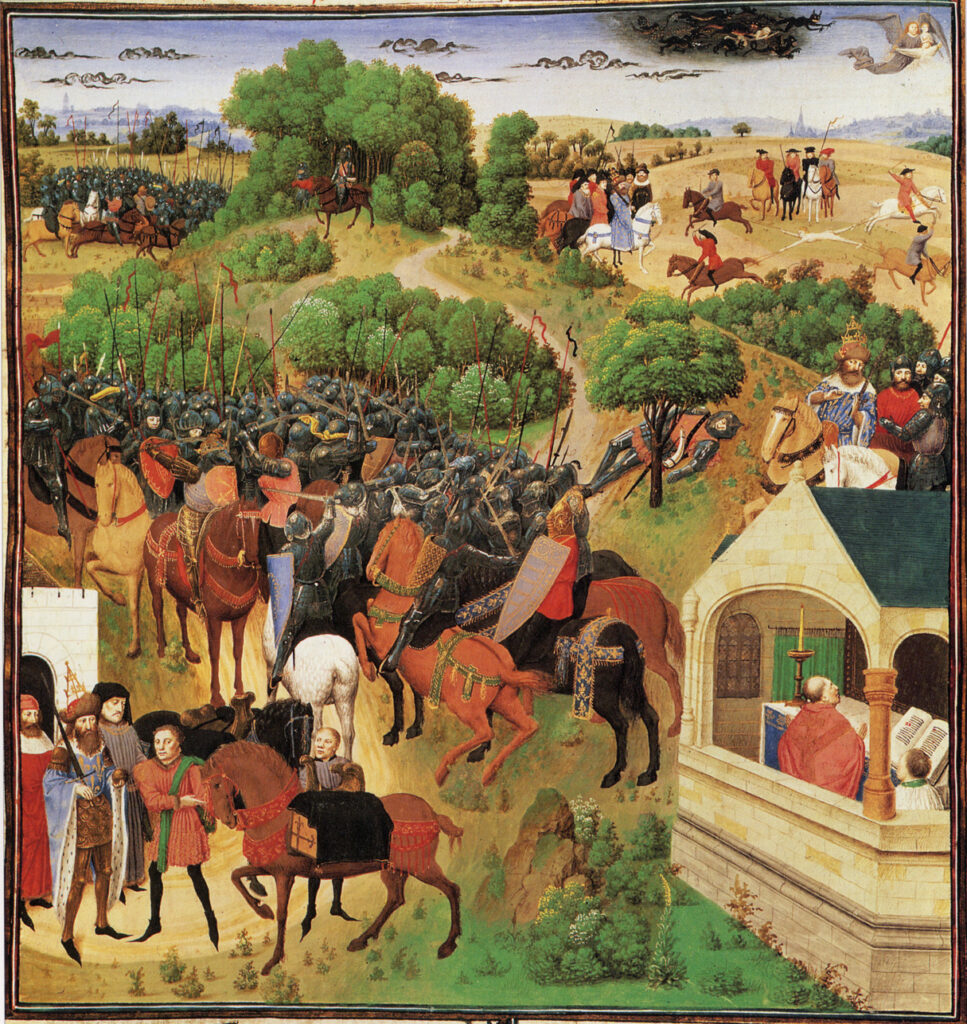
The French epic tradition of Chanson de Geste features some of literature’s most famous equine characters, including Roland’s Veillantif and Bayard, the magical mount of Renaud de Montauban. In “The Song of Roland,” Veillantif shares in Roland’s tragic last stand, fighting alongside his master and displaying almost supernatural endurance and courage. Bayard, meanwhile, possessed extraordinary intelligence and magical abilities, including the capacity to expand his back to carry all four of the Aymon brothers simultaneously. These epic horses transcended their animal nature to become characters in their own right, with personalities, heroic qualities, and narrative arcs that parallel those of their human counterparts. Their deaths or losses within these narratives often carry tremendous emotional weight, demonstrating how deeply medieval audiences connected with these equine heroes. The portrayal of these horses reflects both the practical importance of warhorses in medieval warfare and their mythic significance in the cultural imagination.
Arthurian Legends and Notable Steeds
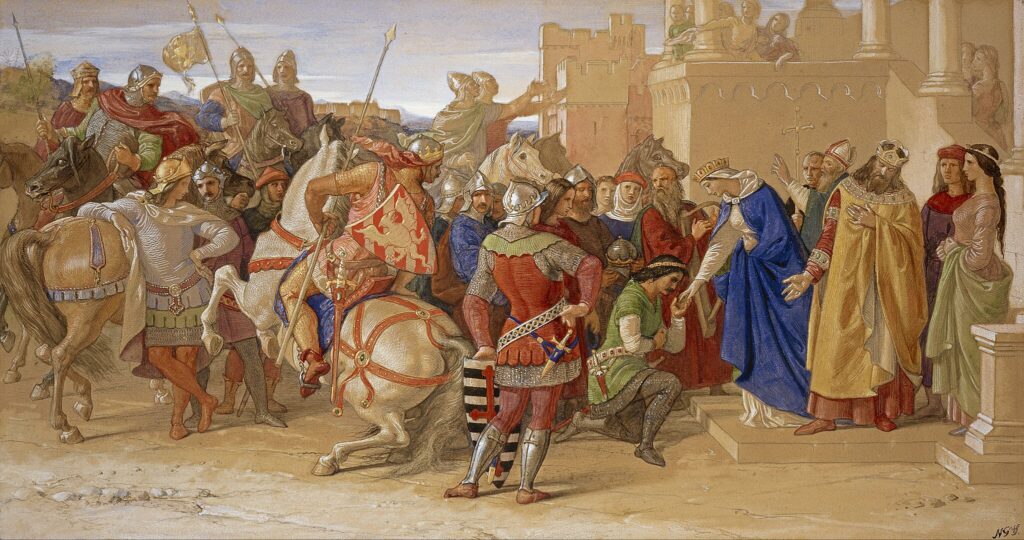
The Arthurian cycle, one of medieval literature’s most enduring contributions, features numerous significant horses that enhance the narrative’s chivalric themes. King Arthur himself rides several notable mounts, including the less-known Llamrei, while his knights’ horses often reflect their riders’ qualities and adventures. Sir Gawain’s aforementioned Gringolet appears across multiple Arthurian tales, described as steadfast and beautiful, mirroring Gawain’s own reputation for courtesy and prowess. Particularly in the quest narratives, horses serve as both practical necessities for the knights’ wanderings and symbols of their chivalric identity, with the loss or exchange of a horse often marking significant character developments or plot transitions. The detailed descriptions of these horses in Arthurian literature, from their colors to their behaviors, reveals how medieval authors used equine characters to deepen characterization and symbolism within these complex narratives. The bond between Arthurian knights and their mounts exemplifies the ideal relationship between nobility and their equine companions, serving as models for courtly behavior.
Horse Imagery in Beowulf and Norse Sagas
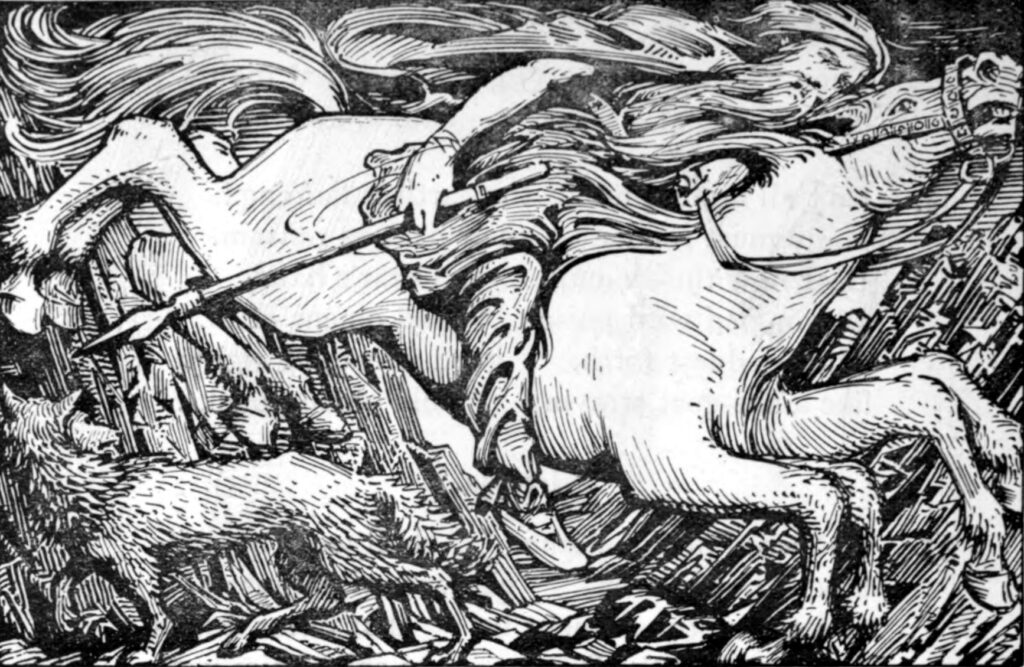
In northern European epics such as “Beowulf” and the Norse sagas, horses take on cosmic and mythological significance beyond their practical functions. Norse mythology features Sleipnir, Odin’s eight-legged horse that can travel between realms, while horse sacrifices and horse fights appear frequently in these narratives as ritually significant events. The famous “horse fight” scenes in several Icelandic sagas serve as proxies for human conflicts, with the horses’ battles foreshadowing or paralleling the struggles between their owners. In Beowulf, horse imagery appears in funeral rituals and as metaphors for the warrior ethos, with the poem’s famous “sea-steed” kenning transforming ships into horses that ride the waves. These northern traditions often blur the lines between horses and supernatural entities, making them mediators between the human and divine realms. The horse’s association with both nobility and sacrifice in these traditions reveals the complex place these animals held in the northern European imagination, as creatures of both practical value and numinous power.
Medieval Romance and the White Palfrey
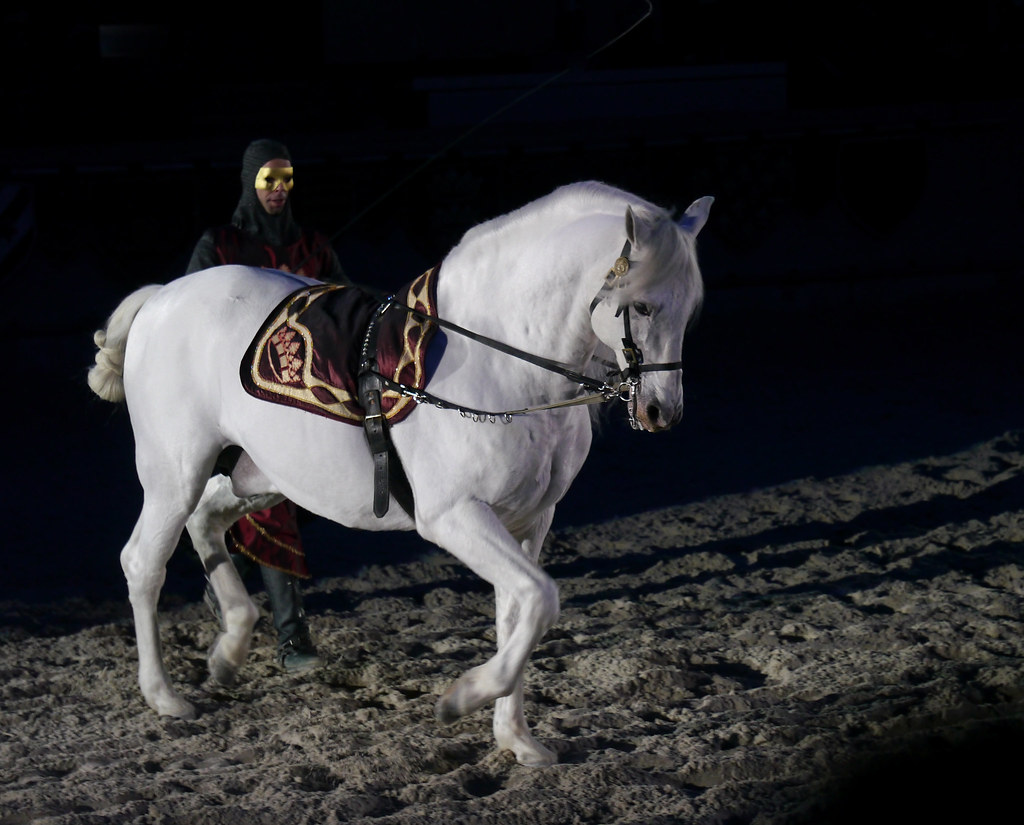
The courtly romance tradition developed specific equine conventions, with particular types of horses assigned to characters based on gender, status, and narrative function. Ladies of romance typically rode white palfreys, gentle ambling horses whose pure color symbolized the rider’s virtue and nobility, creating an immediate visual shorthand for character qualities. The gifting of a palfrey often served as a significant plot point in romance narratives, signaling courtship, alliance, or reconciliation between characters. Romance writers used detailed descriptions of equine tack and trappings to establish scenes of courtly splendor, with elaborately decorated saddles and bridles reflecting the wealth and taste of their owners. The contrast between ladies’ palfreys and knights’ warhorses in these narratives established gendered expectations about movement and action, with women’s restricted mobility on their gentle mounts contrasting with the dynamic freedom of knightly horsemanship. Through these conventions, horses became essential components of the romance genre’s exploration of love, virtue, and social order.
The Allegorical Horse in Religious Texts
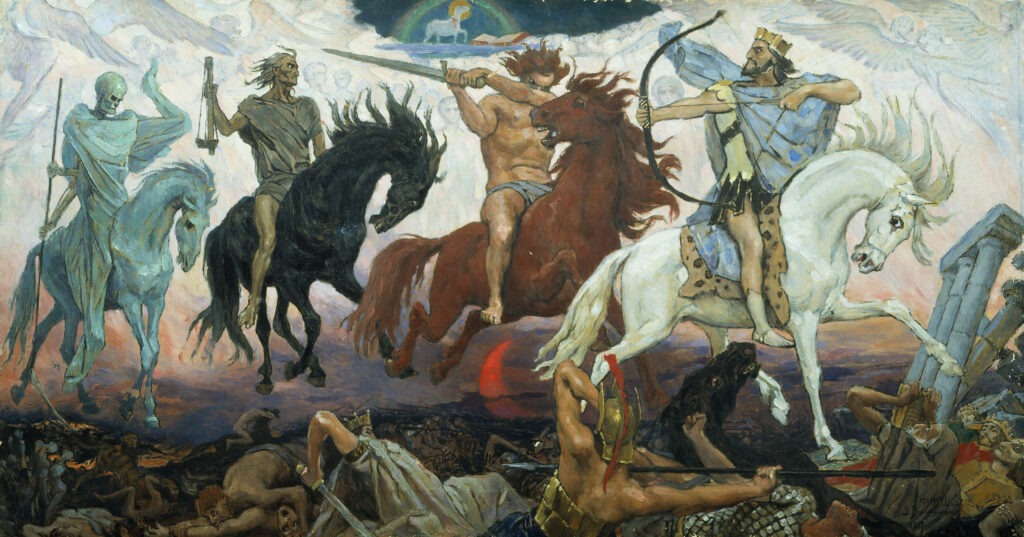
Medieval religious writing frequently employed horse imagery for allegorical purposes, drawing on biblical precedents like the Four Horsemen of the Apocalypse and the white horse of Christ described in Revelation. Moralists and preachers compared the human soul to a horse that must be properly “bridled” with virtue and guided by divine reason, lest passion lead it astray. The 13th-century bestiary tradition incorporated horses alongside other animals as subjects for moral and spiritual instruction, highlighting qualities like loyalty and nobility while warning against pride and wildness. Religious processions and ceremonies often featured specially trained and decorated horses, practices that found their way into religious literature as symbols of divine order and human devotion. These allegorical uses of horses demonstrate how medieval Christian thought incorporated familiar aspects of daily life into spiritual teaching, making abstract concepts accessible through equine metaphors. The horse’s combination of power and trainability made it an ideal vehicle for exploring the tension between human nature and divine guidance that preoccupied medieval religious thought.
Famous Horse Characters in “The Canterbury Tales”
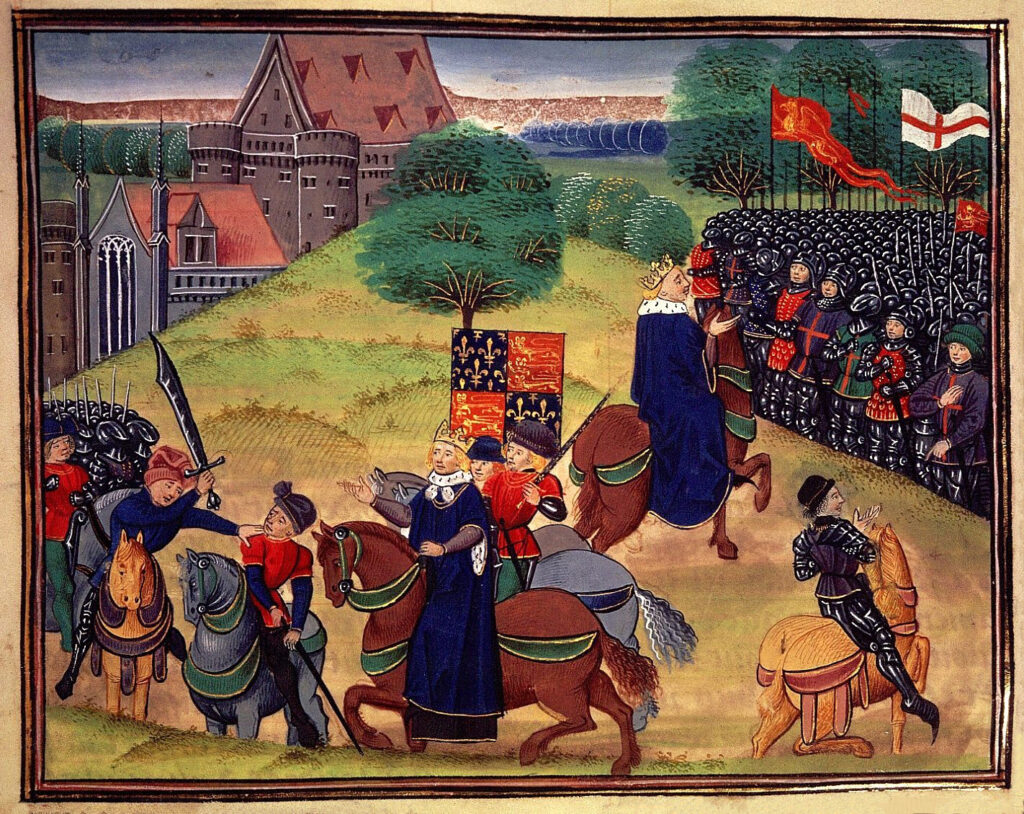
Geoffrey Chaucer’s masterpiece “The Canterbury Tales” uses horses as revealing extensions of their riders’ personalities and social positions, creating a subtle equine commentary on medieval society. The Knight, representing the old chivalric ideal, rides a good but modest horse, while his son the Squire sports a flashier mount, reflecting his youthful vanity and fashion-consciousness. Most famously, Chaucer’s Miller rides a speckled gray mare, an unusual choice for a man that suggests his contrary nature and foreshadows his disruptive role in the tale-telling competition. The Wife of Bath, that independent and much-married woman, sits “upon an amblere esily,” a comfortable riding horse that accommodates her practical approach to life’s journeys. Through these equine characterizations, Chaucer adds layers of meaning to his already complex human portraits, allowing readers to understand characters not just through what they say and do, but through their choice and treatment of horses. The Canterbury pilgrims’ various mounts create a visual procession that reinforces Chaucer’s panoramic view of medieval society, with each horse appropriate to its rider’s station and personality.
Horse Theft and Exchange in Epic Narratives
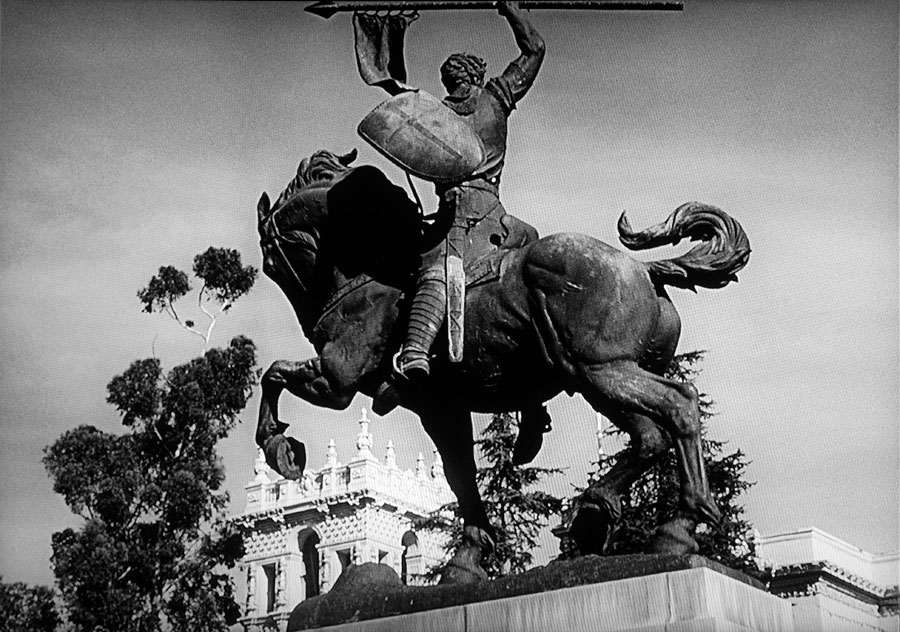
The acquisition, theft, or exchange of horses drives the plots of numerous medieval epics and romances, reflecting the animals’ immense practical and symbolic value. In “The Tale of Gamelyn,” a Middle English outlaw narrative, the protagonist’s disinheritance is symbolized by his brother’s theft of his horses, while his eventual triumph includes the recovery of his equine property. Many chivalric narratives feature the capture of an opponent’s horse as a prize of victory, with knights often returning to battle specifically to claim valuable mounts from defeated foes. The Spanish epic “El Cid” includes detailed accounts of horses captured in battle and sent as gifts to the king, demonstrating both the material value of these animals and their power as political currency. These narrative patterns reflect historical realities wherein horses represented both significant wealth and essential military resources, making their control central to medieval power structures. The emotional investment in these stories suggests that medieval audiences well understood the drama of horse ownership, loss, and recovery from their own experiences in an equine-dependent society.
The Horse as Character Extension in “The Song of Roland”
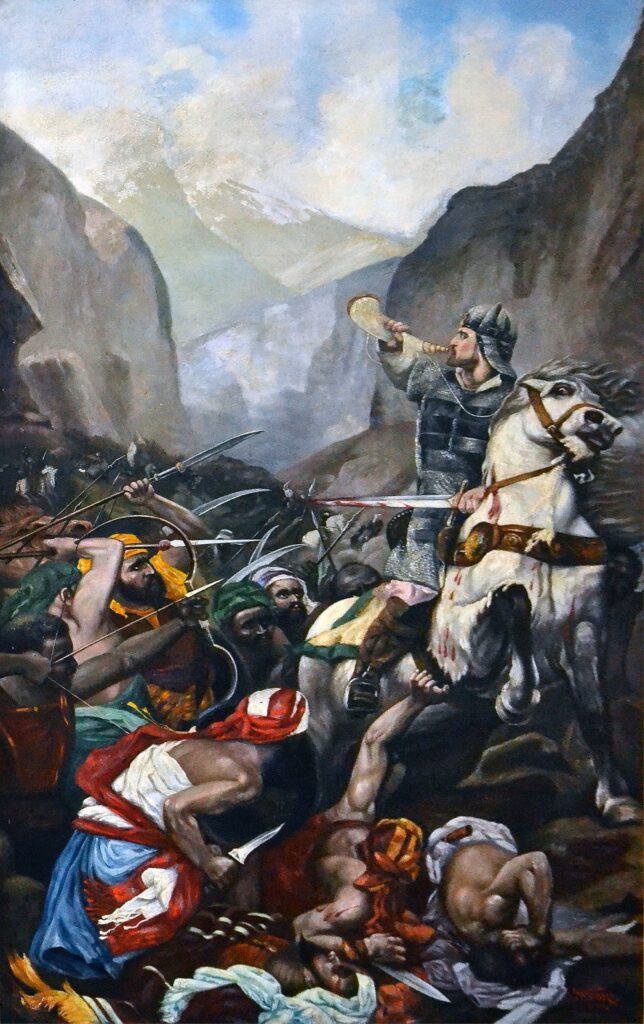
The relationship between Roland and his horse Veillantif in “The Song of Roland” exemplifies how medieval epics used horses as extensions of heroic identity. Roland’s farewell to his faithful steed as both lie dying creates one of the poem’s most poignant moments, revealing the deep bond between warrior and mount that transcends mere utility. Throughout the narrative, Veillantif’s actions mirror Roland’s own courage and steadfastness, creating a unified heroic entity rather than simply a rider and transportation. When wounded, Veillantif continues to bear Roland through battle just as the hero himself fights on despite fatal injuries, creating a powerful parallel between human and equine endurance. This characterization reflects the lived experience of medieval warriors, whose survival and effectiveness depended entirely on their horses’ training, courage, and reliability. The emotional depth of Roland’s relationship with Veillantif demonstrates how medieval literature acknowledged the profound interdependence between humans and horses, especially in warfare where horse and rider functioned as a single combatant.
Magical and Supernatural Horses in Medieval Tales

Medieval literature abounds with horses possessing supernatural qualities, from the shapeshifting water horses of Celtic tradition to the magical steeds of Charlemagne’s paladins. Bayard, the enchanted horse belonging to Renaud de Montauban, could understand human speech, expand or contract his size at will, and possessed extraordinary speed and endurance beyond normal equine capabilities. In Norse mythology, Sleipnir’s eight legs allowed him to travel between worlds, making him a symbol of shamanic journeying and magical transportation. The Middle English romance “Sir Gawain and the Green Knight” features the mysterious green horse of the supernatural challenger, whose coloration matches its rider and suggests otherworldly origins. These magical equines reflect the horse’s liminal position in medieval thought—creatures existing at the boundary between the domestic and the wild, the known and the unknown, the human world and supernatural realms. The prevalence of magical horses in medieval tales demonstrates how these animals captured the imagination as potential conduits to the extraordinary, embodying hopes for transcending human limitations through connection with these powerful beings.
Horses and Social Status in “Sir Gawain and the Green Knight”
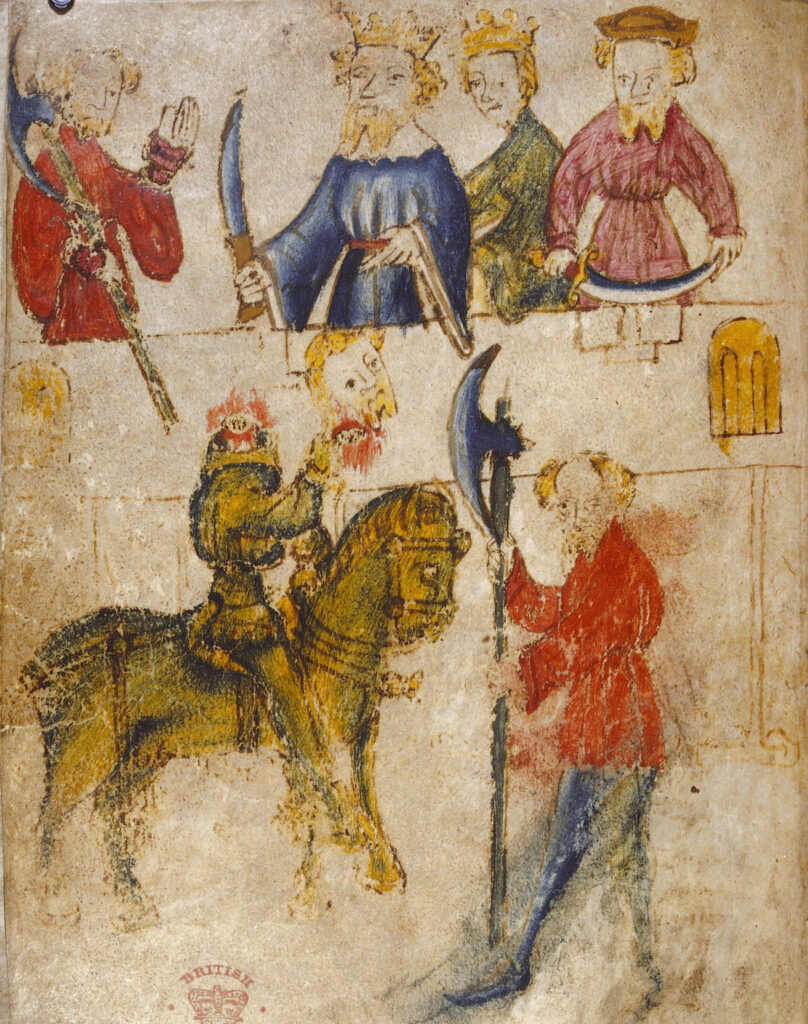
The 14th-century masterpiece “Sir Gawain and the Green Knight” employs horses as markers of social identity and narrative development throughout its complex tale. The Green Knight’s enormous emerald-colored stallion immediately signals the character’s supernatural nature and challenging presence, creating visual spectacle that underscores the disruption he brings to Arthur’s court. Gawain’s faithful Gringolet serves as his constant companion through the quest, with the poet taking care to describe how the horse is housed and tended even as Gawain receives hospitality in various locations. The hunting scenes at Bertilak’s castle juxtapose the courtly, controlled horsemanship of the hunt with Gawain’s own moral “hunt” occurring simultaneously within the castle, creating parallel narratives linked through equine imagery. When Gawain finally departs for the Green Chapel, his relationship with Gringolet represents his last uncomplicated bond, contrasting with the morally complex human relationships he has navigated throughout the tale. Through these examples, “Sir Gawain and the Green Knight” demonstrates the narrative versatility of horses as both practical story elements and symbolic devices carrying significant thematic weight.
The Legacy of Medieval Equine Literature in Modern Fantasy

The powerful tradition of equine characters and symbolism established in medieval literature continues to influence modern fantasy literature and film, creating a direct lineage from ancient epics to contemporary storytelling. J.R.R. Tolkien’s Shadowfax, the majestic horse who carries Gandalf in “The Lord of the Rings,” draws directly from the tradition of supernatural steeds in Norse and Germanic legends, particularly Sleipnir. George R.R. Martin’s “A Song of Ice and Fire” and its adaptation “Game of Thrones” employ horses as status symbols and character extensions in ways that would be immediately recognizable to medieval audiences, with the Dothraki horse-lords particularly exemplifying the warrior-horse bond celebrated in ancient epics. The relationship between horse and rider in modern works like Mercedes Lackey’s “Valdemar” series, featuring telepathically bonded Companions, extends the medieval tradition of horses as more than mere animals but as intelligent partners in heroic endeavors. This enduring fascination with the human-equine relationship demonstrates how profoundly the medieval literary tradition shaped our cultural imagination, creating archetypes and narrative patterns that continue to resonate with contemporary audiences. Through fantasy literature, the medieval equine legacy remains vibrant, allowing modern readers to experience the powerful bond between humans and horses that so inspired our literary ancestors.
Medieval literature’s profound engagement with horses reveals much about the society that produced these enduring works. Far from being merely incidental elements, horses functioned as complex literary devices that conveyed status, character, moral qualities, and spiritual significance. They served as bridges between the mundane and magical realms, as extensions of human identity, and as powerful symbols in their own right. The prominence of horses in these narratives reflects their essential role in medieval life while transcending mere historical accuracy to create enduring literary archetypes. From the thundering destriers of chivalric romance to the supernatural steeds of magical tales, these equine characters continue to gallop through our literary imagination, carrying forward the medieval understanding of horses as creatures existing at the intersection of utility and wonder, the practical and the profound. In studying how horses inspired medieval literature, we gain insight not only into historical horsemanship but into the timeless bond between humans and these magnificent animals—a relationship that continues to inspire storytellers to this day.

